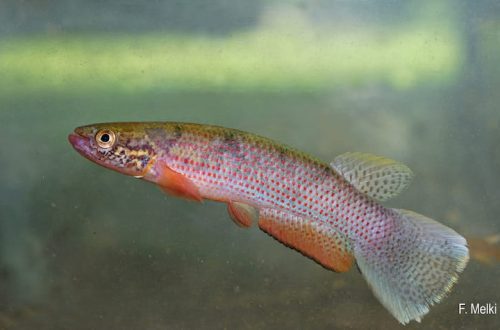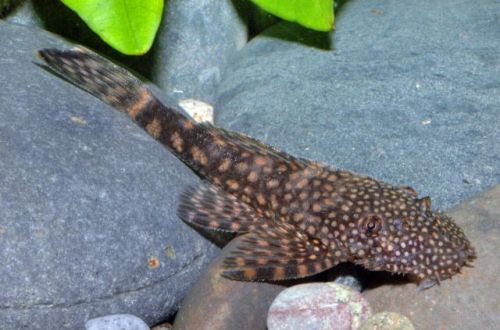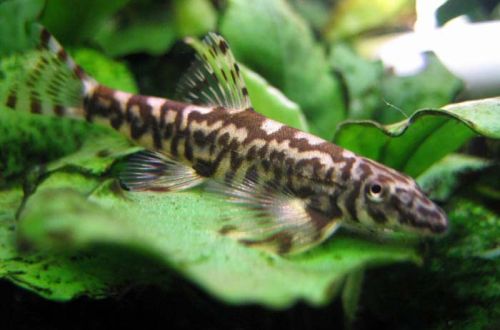
Semaprohilodus
Semaprochilodus taeniurus, scientific name Semaprochilodus taeniurus, belongs to the family Prochilodontidae (Prochilodontidae). Quite a large fish that needs a special diet with a predominance of plant components. Due to its size, gastronomic preferences and difficulties in breeding, it is very rare in home aquariums.

Contents
Habitat
It lives almost throughout the Amazon basin (South America). Inhabits a wide variety of natural biotopes. It occurs both in the beds of large rivers and in numerous tributaries, forest streams, floodplain lakes, swamps.
Brief information:
- The volume of the aquarium – from 500 liters.
- Temperature – 23-29°C
- Value pH — 6.0–8.0
- Water hardness – soft to medium hard (1-20 dH)
- Substrate type – any
- Lighting – subdued or moderate
- Brackish water – no
- Water movement – light or moderate
- The size of the fish is about 30 cm.
- Nutrition – foods with a high content of plant components
- Temperament – conditionally peaceful, there are intraspecific conflicts
- Keeping alone, in pairs and in the neighborhood with other species
Description
Adult individuals reach a length of up to 30 cm, the body is high with a large, somewhat elongated head, and the fins are large. The coloration is silvery with numerous dark specks. The anal, dorsal and caudal fins are striped. The pelvic fins are bright red or scarlet.
Outwardly, it resembles a closely related species of the Multi-streaked Semaprochilodus, which differs only in the absence of dark speckles on the body in the adult state.
Food
In nature, the basis of the diet is bottom organic sediments and aquatic vegetation. Features of nutrition can be traced even in the structure of the digestive system. Semaprochilodus has a double stomach, the first chamber contains abrasive substances (sand, small stones, etc.) that grind plant food into a homogeneous mass, which in turn enters the second chamber for subsequent digestion.
At home, specialized dry food with a high content of plant components is served. Blanched spinach, lettuce, slices of cucumber, zucchini, etc. will be a good addition. It is recommended to periodically include live or frozen food (brine shrimp, bloodworms and other invertebrates) in the diet.
Maintenance and care, arrangement of the aquarium
They are simple and unpretentious in content, except for the need for a huge tank, the minimum volume of which starts from 500 liters for one or two adult fish. Maintenance consists of standard procedures: weekly replacement of part of the water with fresh water, removal of organic waste, equipment maintenance.
Important! The aquarium should be covered with a lid to avoid accidental jumping of fish.
The design is simple – the minimum set of decor includes sandy soil with several snags and thickets of plants. When designing, it is important to preserve large spaces for swimming and at the same time provide for places for shelters.
Semaprochilodus teniurus is prone to damage living plants, so it is recommended to plant fast-growing species with stiff leaves and a strong root system. An alternative option would be mosses and ferns growing on the surface of stones and snags.
Behavior and Compatibility
In the limited space of aquariums, where there is not enough space for retreat, a large group of these fish will behave in a hostile manner towards relatives, so single or pair keeping is recommended. In this case, the fish become calm and can get along even with small species of tetras, zebrafish, etc.
Breeding / breeding
Due to the complex spawning cycle associated with migratory processes occurring in nature, breeding such a large fish at home is very difficult. In the wild, with the beginning of the rainy season, there is a massive migration of fish upstream. Gathering in shoals, they cover hundreds of kilometers in search of the best place for spawning. In the course of their journey, they often have to cross rapids and turbulent currents with the help of jumps similar to how the Far Eastern salmon or its relative in Alaska do. Having reached the destination, spawning occurs – the females release eggs into the water, and the males fertilize it. Further, the eggs become left to themselves, picked up by the current, the future offspring drifts downstream and after a while already in the form of fry reaches the places where their parents began their journey.
In 1990, researchers from Brazil established one curious feature, it turns out that not all fish participate in the annual migration, but only the strongest and hardiest, whose age does not exceed a certain limit. “Elderly” Semaprochilodus remain in the same place and their number sometimes significantly exceeds the number of those who went on a trip. Thus, not the entire population participates in migration, but only a relatively small part of it.





